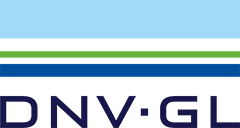Getting the message: Testing the health of onboard control networks
Any state-of-the-art vessel carries a multitude of IT and OT (Operational Technology) equipment, that is not only inter-connected and communicating with each other, but more often than not, is also in near-constant contact with the world beyond the ship – e.g. the Internet, vendor offices, or company headquarters.
To take an example, on a cruise vessel the IT systems encompass all the hotel, entertainment and guest systems and servers, convenience features, wireless networks, television, telephony and all the supporting infrastructure. The OT (marine) domain covers the integrated bridge, navigational equipment, HVAC, power and engine management systems, among many others.
“Onboard communication networks have become the ‘nervous system’ of vessels’ integrated machinery,” says Knut Ørbeck-Nilssen, CEO of DNV GL – Maritime. “A growing share of disruptions and down time in offshore operations can now be traced back to problems with networked equipment. Currently these are usually tackled by ad-hoc troubleshooting, which makes the testing and verification of these increasingly complex and often safety-critical systems ever more important.”

Knut Ørbeck-Nilssen CREDIT: DNV GL
In the summer of 2016, DNV GL teamed up with innovative Greek owner Consolidated Marine Management (CMM) for a test on the health of a control and communication network on board seagoing vessels. The pilot project, conducted on one of CMM’s state-of-the-art chemical tankers, investigated exactly what it takes to undertake a successful test of a vessel’s communication and control systems to strengthen their overall robustness and resilience.
The purpose of a network health test is to evaluate the performance and integrity of a communication system at a given point of time, (i.e. “snapshotting”), but most importantly to detect any failures present, including – but not limited to – capacity problems, failing communication devices and misconfigurations that can lead to off-hire. Control system communications on board vessels are very often made up of the same building blocks as land-based industrial control systems. However, some of the operational requirements are specific to the maritime environment and these need to be taken into account.
In the event that any problems are found, specific mitigating actions help to increase the overall robustness and resilience of the communication and control systems onboard the vessel. If such actions are not possible, the test remains very beneficial as those responsible for the systems become fully aware of the real condition of the systems.
The overall aim, therefore, is to obtain the capability to examine if there are any intermittent errors and predict future failures such as any emerging network degradation, existing capacity or configuration problems, or other threats to the availability and integrity of the control system network being tested.
“We believe that with advanced technology-based assessments, our customer can reap significant savings. Having a comprehensive overview of the ‘health’ of the network onboard will allow owners to schedule preventive measures at convenient times, enable better maintenance planning and perhaps even result in extended lifespan of aging assets,” says Mate J. Csorba, Principal Specialist, Marine Cybernetics Advisory, DNV GL – Maritime.
The pilot project on board CMM’s vessel consisted of 46 tests covering Ethernet-based networks (control systems and auxiliary systems), CAN-bus connectivity (sensors and the alarm system), and a selection of DNV GL class rules addressing on board communication networks. In practice this translated into a focus on the alarm monitoring system, the ballast water treatment system, the main engine shaft power and performance monitoring system, the main engine control and monitoring system and auxiliary networks.
A growing share of disruptions and down time in offshore operations can now be traced back to problems with networked equipment
“CMM’s vessel is new with modern IT equipment both in software and hardware, built in 2015, and it proved to be in a very good condition,” says Nikolaos Kakalis, DNV GL’s Manager for R&D and Advisory Services in South East Europe and Middle East. “The results did not indicate any discrepancies and, as such, were considered as an initial snapshot of the health of the vessel’s communication systems. This ‘healthy’ snapshot can be used to quickly identify any changes or deviations and to aid troubleshooting if any issues are encountered with individual systems in the future,” adds Kakalis.
The testing was conducted mainly from the engine control room, the cargo control room, and the bridge. Active stress tests were used to verify whether the communication network was robust enough under specific failure scenarios, while passive measurements were employed to find indications of any potential problems and deviations from a system’s installation documentation.
“This was an important first step, and we are very grateful for CMM’s cooperation,” says Csorba. “Looking ahead, as we develop these concepts further, it is possible that we may be able to move to greater data collection by automated onboard sensors, which report on the system’s health between port stays, or enable remote access procedures which could let us perform system tests from shore in more or less real time.”

An onboard network ‘health’ test enables better maintenance planning and could extend the lifespan of aging assets - Mate J. Csorba, Principal Specialist, Marine Cybernetics Advisory, DNV GL CREDIT: DNV GL
More information can be found at https://www.dnvgl.com/services/cybersecurity-and-network-resilience-82950

